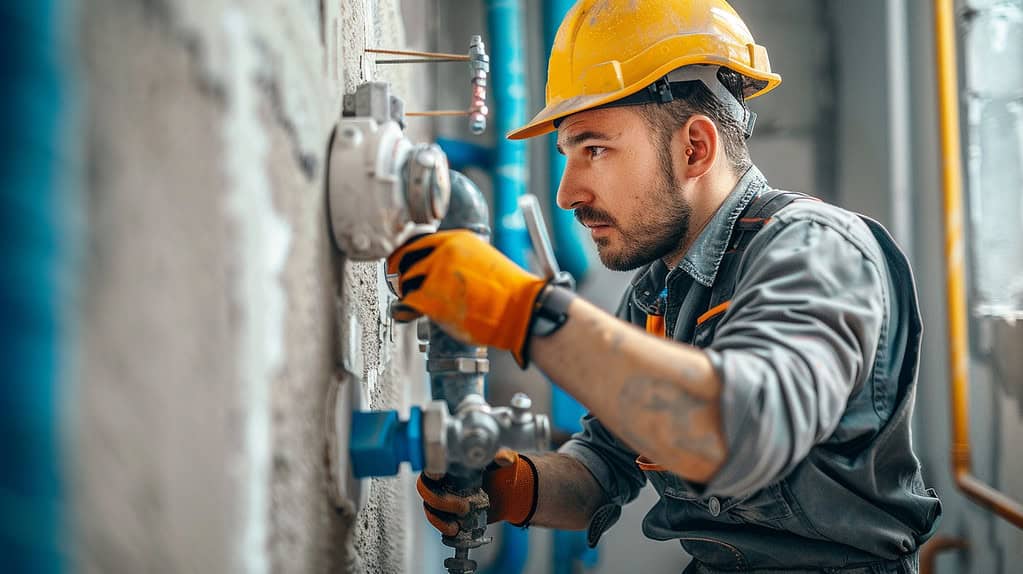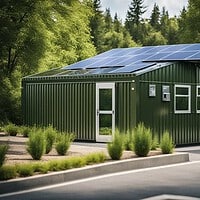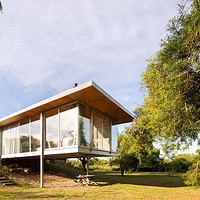In an attempt to set forth the project of creating a bespoke residential abode or a commercial enterprise that is teeming with life, it would require careful attention at the strategic center of different pivotal aspects in each aspect of the construction. These include but are not limited to:
- Structural Layout
- Choice of Materials
- Flooring Selection
- Illumination Strategies
And undoubtedly, the critical element of plumbing!
Building a new home or workplace from the ground up offers freedom to use the most recent technologies and state-of-the-art materials more than any other. It also gives you room for flexibility in the context of being able to control exactly how your plumbing system is configured. To arm you with what it takes to work together with your experienced plumber in such projects, consider the following to get new construction plumbing.
Elements Comprising Your Property’s Plumbing Infrastructure
All in all, virtually all structures intended for any kind of residential use will require the basic or standard set of plumbing components to ensure everything remains in good working order—of course, unless one prefers the more “off the grid” way of life! Your plumbing system is expected to include:
Innovative Solutions for New Construction Plumbing Pipelines
As your plumber builds your new home, so they will take on the plumbing of a variety of different pipes. The selection of the pipeline depends on the use it will be put to in the structure. For instance, copper pipes are commonly used in carrying hot water since they are very resistant to heating. Supply pipes aid to bring fresh water into your house, while drainage pipes are effective in taking away waste and sewage water.
Fittings and Fixtures
Before finalizing space design in your new construction, make sure the place includes all plumbing fixtures. These are the tangible parts of the system that you use directly, and they include:
- Lavatories
- Water Closets
- Bathtubs and Showers
- Faucets
- Potable Water Dispensers
- Water-Utilizing Appliances such as Dishwashers and Washing Machines
Installation work should be made with care, while assembling of components should be neatly done and integrated in your pipeline system perfectly. They will carry out the installation of gas lines for stoves or dryers according to the exact nature and scope of the given project.
Waste Disposal Systems and Sewage Treatment Infrastructure
The incorporation of these two sewerage treatment systems with the sewer line in any plumbing network is of great importance. However, it is a gigantic task to install them and can be successfully done with the help of a professional who has years of experience in this field. Normally, the septic tanks are located below the ground approximately about some feet, roughly 10 to 25 from the residence. These tanks are purposed to separate solid waste from the liquid one, whereby the latter is usually channeled to leach fields for natural filtration back into the soil. Solid waste accumulation within the tank necessitates periodic removal by a specialized septic tank service.
On the other part, sewer lines facilitate the conveyance of sewage from your property to the main line of the sewer. It carries away the sewage to a treatment facility for further purification and discharge into the ecosystem.
Emergency Response Mechanisms: Shut-Off Valves
Each house also had a main shut-off valve in the water supply to the whole house with individual shut-off valves for such appliances as sinks and toilets. This does play a big role in allowing for the fast stopping of water flow when there is a plumbing emergency, or when particular appliances need maintenance work.
Revolutionizing the New Construction Plumbing Journey
Integration of plumbing in the dimension of new construction activities takes a multi-layered process that intertwines its activities with other dimensions of the construction. This is usually the bespoke manner in which plumbing gets integrated into your new residential or commercial venture:
Stage 1: Procure Permits
Always seek the relevant county or municipal authority to get the necessary permits before undertaking any work. What kind of permits is needed by you, however, will depend on your amount and nature of work. It is of essence, therefore, to work with a certified plumbing expert who can assist in arriving at an agreement with the set regulatory levels in obtaining the building permits that will ensure conformity to the codes associated with local plumbing.
Stage 2: Craft the Blueprint
First, come the plans of details on the plumbing. This is a very crucial step, meaning a really detailed phase of planning where to place the fixtures, pipelines, and appliances. The most important part to be considered during this phase is accuracy because righting the mistakes that are to occur later in the process is going to be very problematic and costly.
Stage 3: Commence Rough-In
Once the layout is finalized, your plumbing expert follows through with the rough-in stage. Here, actual piping and fixture installation are carefully cut into walls and floors to allow setting up the plumbing infrastructure. While all connections are established at this juncture, integration with water and sewage lines is deferred.
Stage 4: Execute Installation
Your plumber goes ahead with the installations of the rest of the fixtures after rough-in. This marks the first and major integration of your plumbing network within the house into the water and sewage lines.
Stage 5: Conduct Rigorous Testing
On completion of the installation, your plumber is going to carry out a comprehensive test program to ensure that the new building plumbing system is working just perfect. Any leaks or defects that are detected will be fixed immediately.
Stage 6: Apply the Finishing Flourish
Culmination of the process is careful application of finish touches by your plumbing specialist, including putting on faucet handles and attaching toilet seats, cleaning up very carefully to restore the premises to its pristine state.
Tips for Seamless New Construction Plumbing Endeavors
Dealing with the new construction plumbing projects requires an adoption of a strategic approach to perfect the tasks. Some of the tips are exclusive to you here, so you are able to get along with the process with an aim of streamlining it without any challenges:
Collaborate with Seasoned Professionals
Plumbing systems can be complicated, requiring expertise that only the services of a competent professional can avail. Trying the DIY way may open the floodgates of frustrations and financial backlogs. Trust your project to a licensed plumber with proven New Construction experience for precision and efficiency.
Strategize with Precision
A very important point: plan in detail with your plumber, general contractor, and architect before you start. Proper positioning of the various components guarantees minimum disruption at a later stage.
Secure Necessary Permits
Getting the necessary permits is not optional, it has to be done. Getting together with a licensed professional simplifies the matter; they do all the running around for you in getting the required permits.
Rigorous Testing Protocols
After installation, thorough testing is to be done for latent problems, which, if not identified at that stage, are sure to balloon and cause trouble later on. The testing is to be done with all vigilance so that no chances of leaks and other malfunctions, which can happen upon construction, take place.
Navigating the difficult world of new construction can be intimidating, but with the right team by your side, the process becomes infinitely smoother. Turn your vision into reality with unmatched precision and professionalism.















